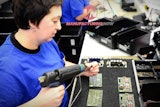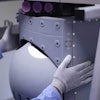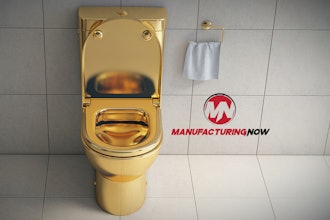
Market research firm PwC and their in-house consulting business Strategy& recently unveiled Manufacturing’s next big act: Building an industrial digital ecosystem – a report describing trends and attitudes on technological upgrades and related investments.
Some of the more interesting findings showed how the industrial sector is increasing their level of investment in digital technologies. This basically covers anything involving data acquisition and transfer, or platforms that help streamline any internal or external processes. Some key survey stats show:
- In the last two years, U.S. manufacturers invested an average of 2.6 percent of their annual revenue on digital technologies. That investment is expected to increase to almost five percent in the next five years to an estimated $350 billion.
- Nearly two-thirds of those surveyed expect that adopting digital manufacturing technologies will lower operating costs by at least 11 percent, mostly through efficiencies gained by automating processes and production.
- Over half of these manufacturers also expect to boost revenues by at least 11 percent as their digital ecosystem enables smarter production and business models. A key benefit of such investments should entail preventing down time. Given that one study cited by PwC estimates production stoppages costing an average automotive factory $22,000/minute, this validates a number of related digital expenses.
- 47 percent of respondents expect revenue of at least 10 percent in the next five years from digitizing their product portfolio; 44 percent will see similar revenue growth from introducing a digital product portfolio; and 38 percent felt such investments will lead to big data analytics services that will improve customer services.
- Many of these investments would also enable product-as-a-service revenue, i.e. sensors that collect and process data in alerting customers to preventative maintenance needs or software upgrades.
Specific technologies called out in the report that will continue to see significant levels of investment include 3D printing, augmented reality, IoT and advanced robotics, along with the networks and software that supports them. The report indicates that these technologies have transitioned to the early main-streamed phase of their lifecycle. More specifically:
- 59 percent of U.S. manufacturers reported using some sort of robotics technology.
- 66 percent are using 3D printing – 50 percent for prototyping and 33 percent for final product production.
- 35 percent are using data collected by smart sensors, with 17 percent projected to do so in the next three years.
- 38 percent are embedding sensors within products.
- 33 percent expect to adopt virtual reality and augmented reality tech by 2018.
Supporting the IoT trend is the fact that manufacturers reportedly invested $29 billion in global IoT solutions in 2015, and are forecast to spend $70 billion by 2020. The most common applications include tracking assets and inventory, and improving analytics for predictive maintenance. Applications for IoT and other digital investments seem focused on improving customer engagement to integrate product development and engineering throughout the enterprise.
While these investment trends are clear, the timeframe for realizing a return on these investments is still somewhat cloudy. Beyond calculating the ROI to help validate these tech-focused investments, respondents cited cultural issues relating to organizational readiness. So even as many are embracing the need and benefits of new technological investment, the same trepidation continues to impact the industry, albeit at lower levels than in the past.























